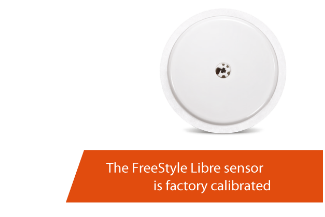Freestyle Libre Flash Glucose Monitoring System
This sensor works with your phone providing you have the librelink app downloaded and it is compatible with your phone.
The FreeStyle Libre sensor’s small size makes it discreet to wear. It is worn on the back of your upper arm and lasts for up to 14 days.
Disclaimer: We don't take responsibility for an failures with Freestyle Libre devices. Any issues are dealt with through direct contact with the Freestyle Company.
The Sensor has a small, flexible tip that is inserted just under the skin.
Unlike traditional blood glucose monitoring, using the FreeStyle Libre sensor does not involve painful routine finger pricks. You can scan as many glucose readings as you want whilst the sensor is being worn – it even scans through clothes!
It continuously measures the glucose concentration in your interstitial fluid, and stores 8 hours of data. This means that for a complete glycaemic picture, you only need to scan once every 8 hours– enabling you to make more informed decisions about how you manage your diabetes.
The FreeStyle Libre sensor is water-resistant and can be worn on the back of your arm for up to 14 days whilst you shower, bathe, swim, exercise or play.
You do not need to calibrate the FreeStyle Libre sensor with a finger prick. As it is made by a process which means the sensitivity of the sensors vary very little - it is calibrated at the factory.
WHAT DOES 'NO USER CALIBRATION' MEAN?

Calibration, sometimes called coding is needed because the sensitivity of each sensor can vary within each batch that is made.
The FreeStyle Libre sensor is made by a process which means the sensitivity of the sensors varies very little. This means that it is calibrated at the factory - so you do not need to calibrate it again.
WHAT'S THE DIFFERENCE BETWEEN TRADITIONAL BLOOD GLUCOSE TESTING AND FLASH GLUCOSE TESTING?
Finger prick blood glucose readings and sensor glucose readings won't always match and in fact are likely to be different. Sensor glucose reading come from the interstitial fluid (ISF), a thin layer of fluid that surrounds the cells of the tissue below your skin. There is a 5 to 10 minute delay in ISF glucose response to changes in blood glucose